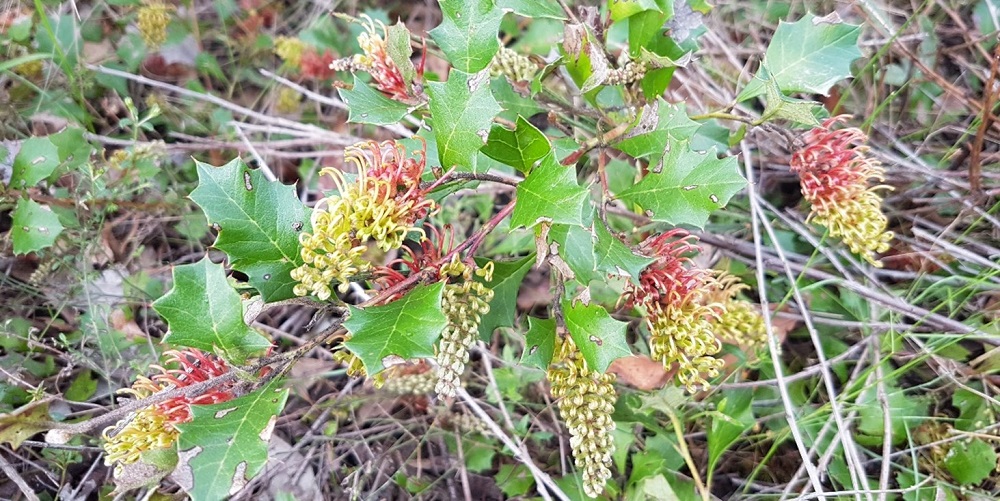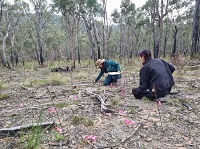 Photo credit: Irena Cassetari
Photo credit: Irena Cassetari
In short
|
Why is Enfield Grevillea threatened with decline?
Enfield Grevillea (Grevillea bedggoodiana) is a low growing shrub to 0.5m high and endemic to a small area in the dry forests around Enfield, south of Ballarat in Victoria. Plants can re-shoot from lignotubers after fire or slashing and regenerate from seed stored in soil. It is estimated that there are about 37,000 plants across 60 populations in the wild.
It is listed as Vulnerable under the Commonwealth Environment Protection and Biodiversity Conservation (EPBC) Act 1999, and endangered under the Victorian Flora and Fauna Guarantee (FFG) Act 1988. The main threats to the species are introduction of Phytophthora cinnamomi (a root-rot pathogen) and inappropriate fire intervals, but little is known of its fire requirements.
What we are doing?
We established permanent monitoring sites in Enfield State Park, to study the reproductive responses of Enfield Grevillea to different fire intervals and their persistence over time. Four sites were selected, and each set up with a burnt (impact) plot and an unburnt (control) plot. Pre-burn data was collected in 2021, and post-burn data in 2023. At each plot we measured:
- diameter of plants and their lignotuber
- number of seedpods before fire
- plant mortality
- number of seedlings germinated after fire.
Key findings:
- Evidence that larger plants are more likely to have seed and seedpods.
- Strong evidence that the number of seedlings were greater in burnt than unburnt plots.
- There was insufficient data to compare plant mortality between burnt and unburnt plots.
This project was a partnership with DEECA Grampians Region and Parks Victoria. We also worked together with volunteers who helped us collect record and collect data of the plants at the sites.
Future research and monitoring
Our research highlights long-term monitoring is critical to understand the influence of fire intervals on the survival and persistence of Enfield Grevillea populations. Monitoring sites post-burning over the next two, five and ten years, will provide valuable information that can inform planned burns in the area. This future monitoring should also include measuring seed production and survival rates of resprouting and seedling plants.
How you can help
When visiting the parks and reserves of around Ballarat, ensure that you keep to tracks and your walking boots are clean to avoid introducing and spreading Phytophthora.

Photo credit: Annette Muir
Publications
For more information contact annette.muir@deeca.vic.gov.au or research.ari@deeca.vic.gov.au
Page last updated: 02/12/25